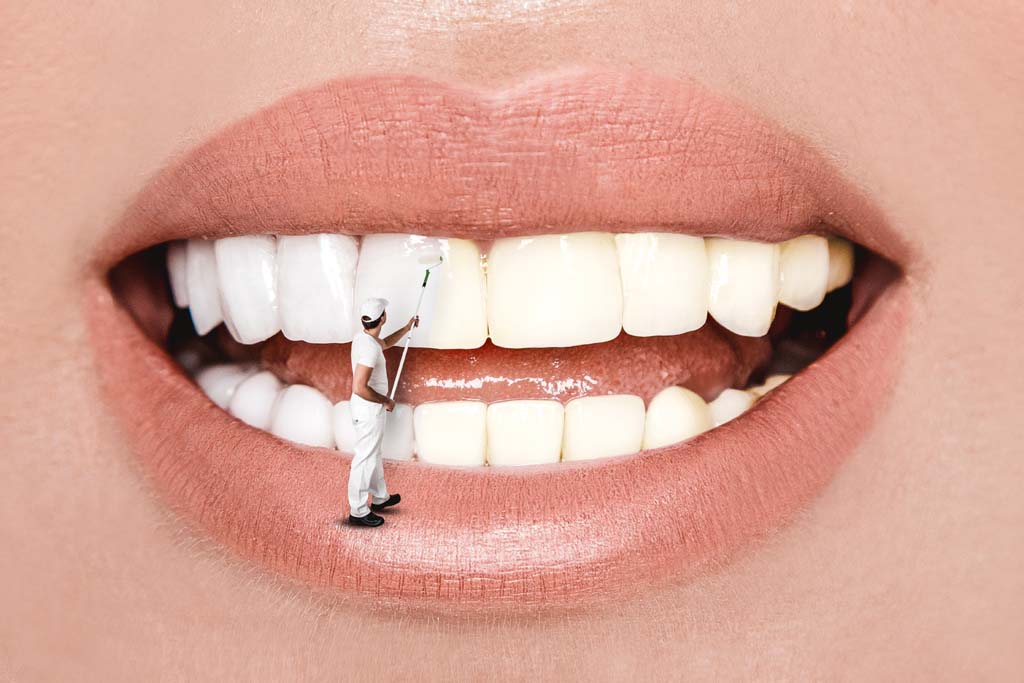Teeth whitening
- Home
- Teeth whitening
What is Teeth Whitening?
Teeth whitening is a cosmetic dental procedure aimed at lightening the color of teeth. Over time, teeth can become discolored due to certain foods and drinks, tobacco use, age or poor dental hygiene. Teeth whitening treatments use bleach or other chemicals to break down and eliminate stains on enamel and dentin, the two main layers of teeth. There are several methods for teeth whitening, including in-office treatments, at-home kits, and over-the-counter products. In-office treatments typically involve the use of high-powered light or lasers to accelerate the bleaching process. At-home treatments can include custom-fitted trays, strips or gels that contain a lower concentration of bleaching agents. While teeth whitening can improve the appearance of teeth, it is important to consider potential side effects, including gum irritation or tooth sensitivity. It is also essential to have realistic expectations for the outcome of the treatment.

Learn about teeth whitening procedures.
Teeth whitening has two types: over-the-counter and professional treatments. Over-the-counter products take longer, like toothpaste and strips, while professional services give quick results, higher concentration, and are available in-office or at-home with custom-fitted trays over several weeks. It’s best to talk to a dental professional before deciding on a treatment. Consider your goals, budget, and oral health to determine your desired outcome.
Office Teeth Whitening
Office teeth whitening is a cosmetic procedure that uses professional-grade bleaching agents to achieve a brighter, whiter smile. It’s a speedy and effective method that typically takes an hour, and you get instant results. The treatment is personalized to your requirements to ensure a natural look. However, not everyone is a suitable candidate, and people with sensitive teeth or tooth decay may not be able to undergo treatment. To determine if this procedure is right for you, it’s crucial to consult with a dental specialist.
Laser teeth whitening uses light to speed up bleaching, taking about an hour for several shades of improvement. Results are lasting if hygiene is maintained. Side effects can include temporary tooth sensitivity or gum irritation but are safe with a qualified dental professional.
Routine Dental Scaling
Routine dental scaling and polishing involve removing plaque, tartar, and stains to prevent gum diseases and tooth decay. The dentist or hygienist uses specialized instruments like scalers or ultrasonic devices. Afterward, the teeth are polished using special paste to remove stains and make them smoother. Regular scaling and polishing every six months detect oral health issues early before they lead to more severe problems, which may require complex treatments. Brushing twice daily, flossing, and using mouthwash at home assists to maintain healthy teeth and gums.
Zoom Home Whitening Kits
Home teeth whitening is a convenient option to remove coffee, tea, wine, or tobacco stains. Kits are available in gels, strips, or trays that contain hydrogen peroxide or carbamide peroxide and can be used at home. Professional whitening is more effective, but home whitening can provide some improvement. Follow instructions carefully to avoid tooth sensitivity or gum irritation. Consult with a dentist before starting any whitening process to ensure you choose the right procedure for you.